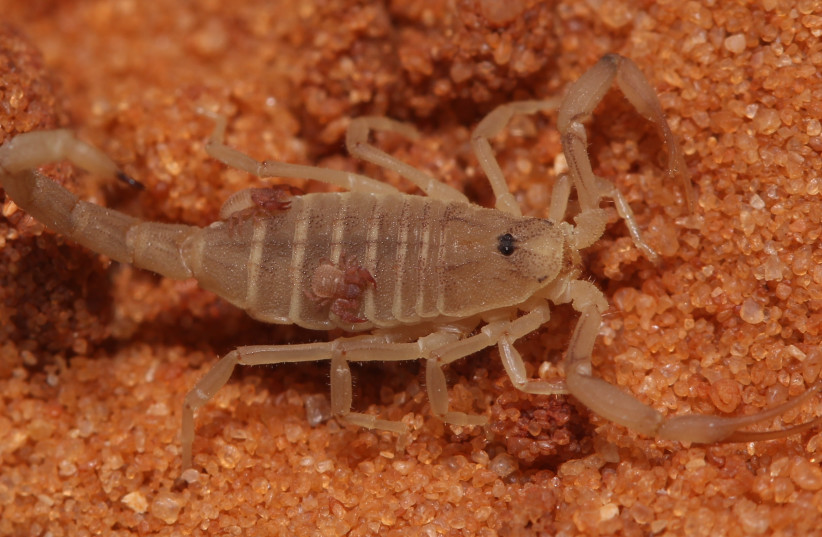Israeli scientists have discovered the first instance of a pseudoscorpion being carried by a larger scorpion, according to a publication on Tuesday.
“Phoresy” refers to an interaction in which a phoretic animal (or phoront) latches itself onto a host animal for dispersal. Like traveling piggyback, the term comes from the Greek phorein, which means “to carry,”
Now, researchers from the National Natural History Collections at the Hebrew University of Jerusalem (HU) and the University of Haifa’s evolutionary and environmental biology department have documented the first-ever observation of phoresy of pseudoscorpions on a scorpion host. They said this unique behavior sheds light on the intricate relationships of myrmecophile arachnids, particularly between the pseudoscorpion genus Nannowithius and the scorpion species Birulatus israelensis.
The scorpions are native to the region
The genus Birulatus is found in Jordan, Israel, and Syria, comprising four described species. It is characterized by a small body size, up to two cm long, and reduced lateral eyes, but only B. israelensis was studied for its
ecology and biology and was reported as a myrmecophile.
The study, led by Yoram Zvik, Dr. Sharon Warburg, and Dr. Efrat Gavish-Regev from the HU collections documented the inaugural observation of phoresy involving a myrmecophile pseudoscorpion on a myrmecophile scorpion. Documented instances of phoresy include pseudoscorpions attaching themselves to various hosts, ranging from mammals and birds to different insect orders and even other arachnids.

The research paper entitled “Hitching a Ride on a Scorpion: The First Record of Phoresy of a Myrmecophile pseudoscorpion on a Myrmecophile Scorpion” appears in the journal BioOne Complete.
This “groundbreaking” observation not only expands our understanding of arachnid behavior but also opens avenues for future research into the intricate world of symbiotic relationships within the ant nest ecosystem,
the team said. “Our discovery prompts further exploration of the complex symbiotic interactions within ant nest ecosystems, including how pseudoscorpions elude ants, their alternative hosts, and the cues for both pseudoscorpions and scorpions to disperse.”
The study focused on pseudoscorpions belonging to an endemic Withiidae species, Nannowithius wahrmani observed clinging themselves onto the endemic scorpion species Birulatus israelensis in Israel.
The Withiidae family, encompassing 37 genera and 170 species, has a global distribution, with a significant presence in tropical and sub-tropical regions. Species within the genus Nannowithius exhibit “myrmecophilic” tendencies, meaning that they form symbiotic associations with ant colonies.
The research focuses on the Nannowithius pseudoscorpions observed on the Birulatus scorpion in Israel, marking the first recorded instance of pseudoscorpions engaging in phoresy on a scorpion host.
The study took seven years
As part of his HU master’s of science degree studies at the lab, Zvik – who is now a doctoral student at the lab of Prof. Eran Gefen at the University of Haifa – conducted an extensive seven-year study involving field surveys, nest monitoring, and observations in the eastern part of Israel. Over 1,000 observations of Birulatus israelensis were documented, with only two observations of the pseudoscorpions species Nannowithius wahrmani on the scorpions back during specific dates in late spring.
The co-evolution of this phoretic behavior suggests an effective dispersal mechanism, potentially triggered by the high foraging activity of the Messor ants during late spring. The study raises intriguing questions about the cues for dispersion, the coevolutionary relationship between the pseudoscorpions and scorpions, and the potential benefits of this symbiotic interaction.
